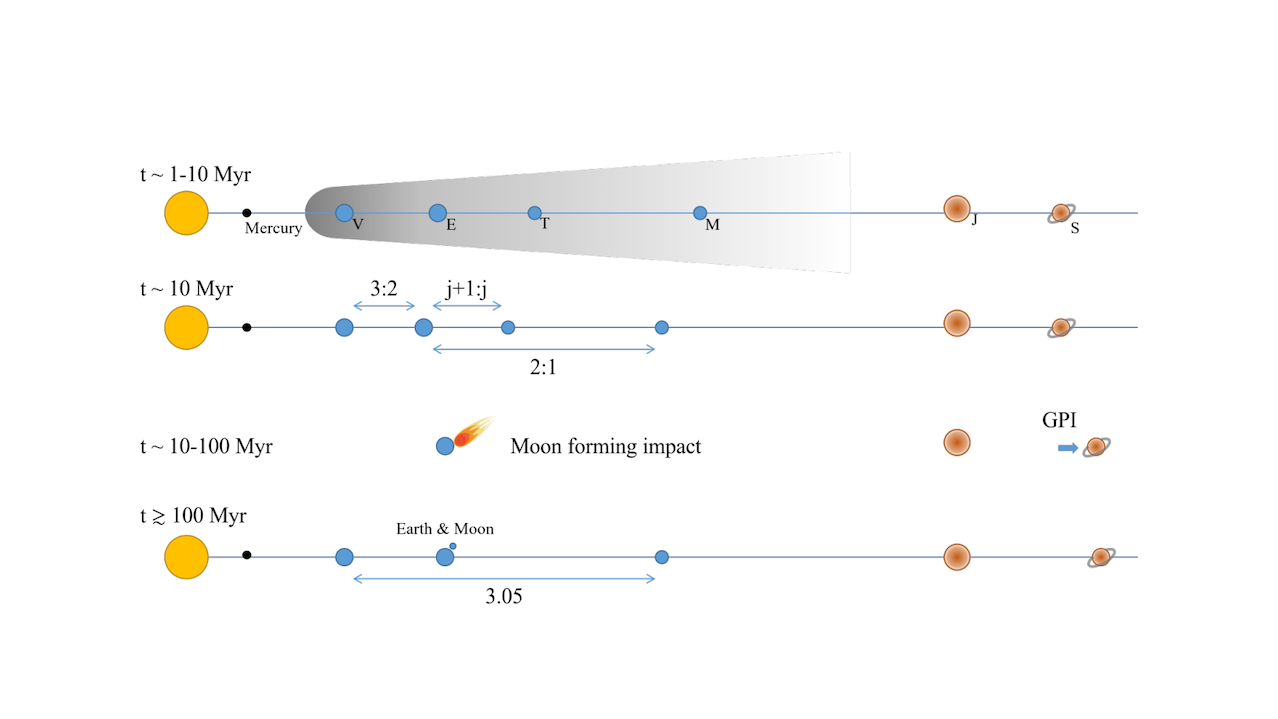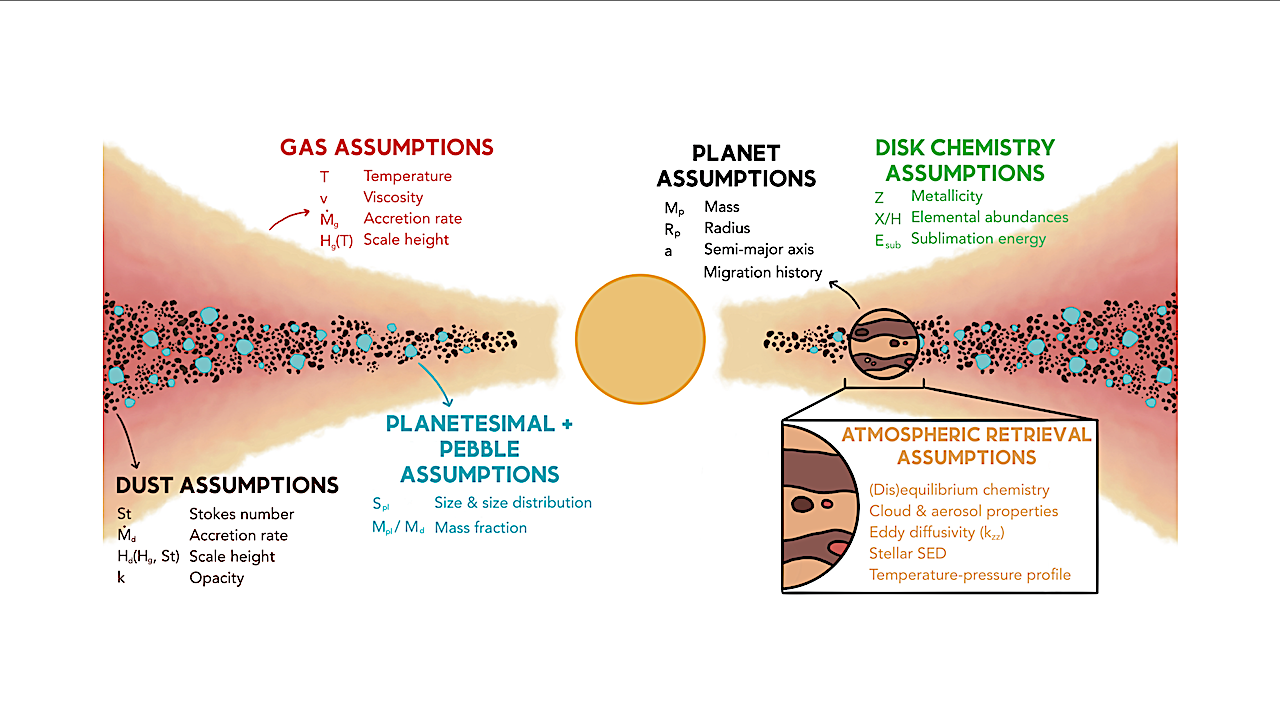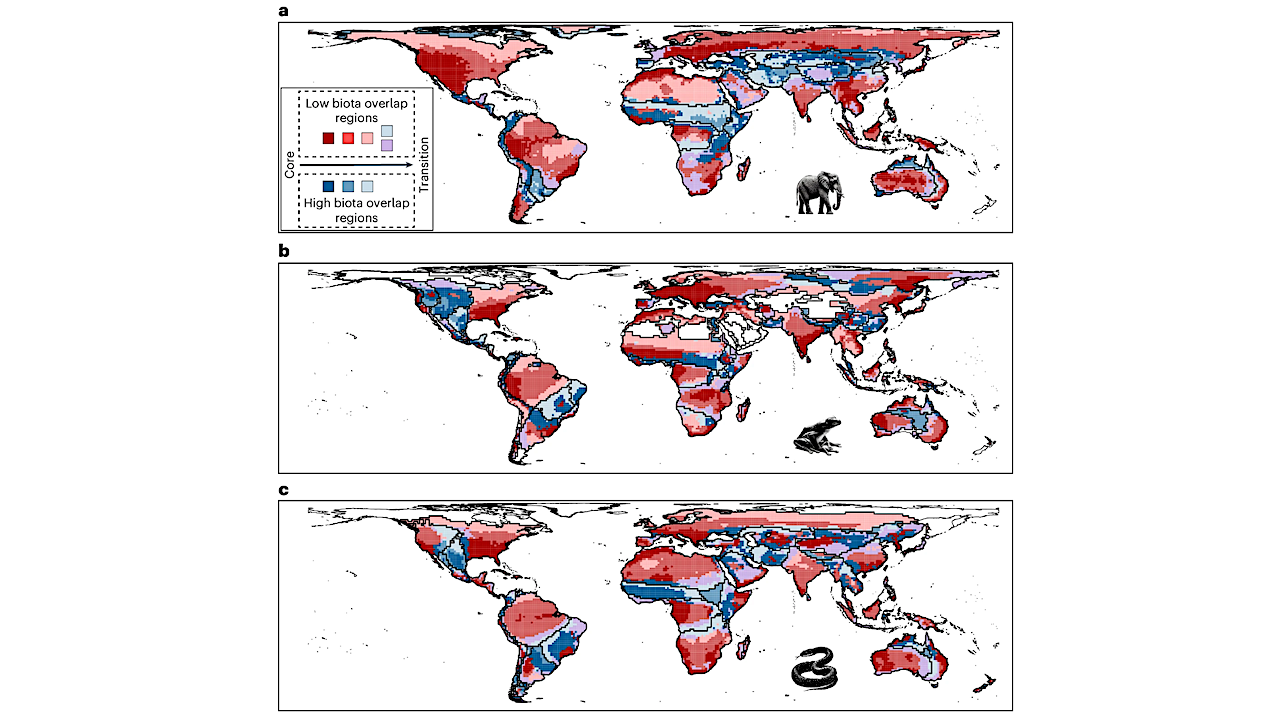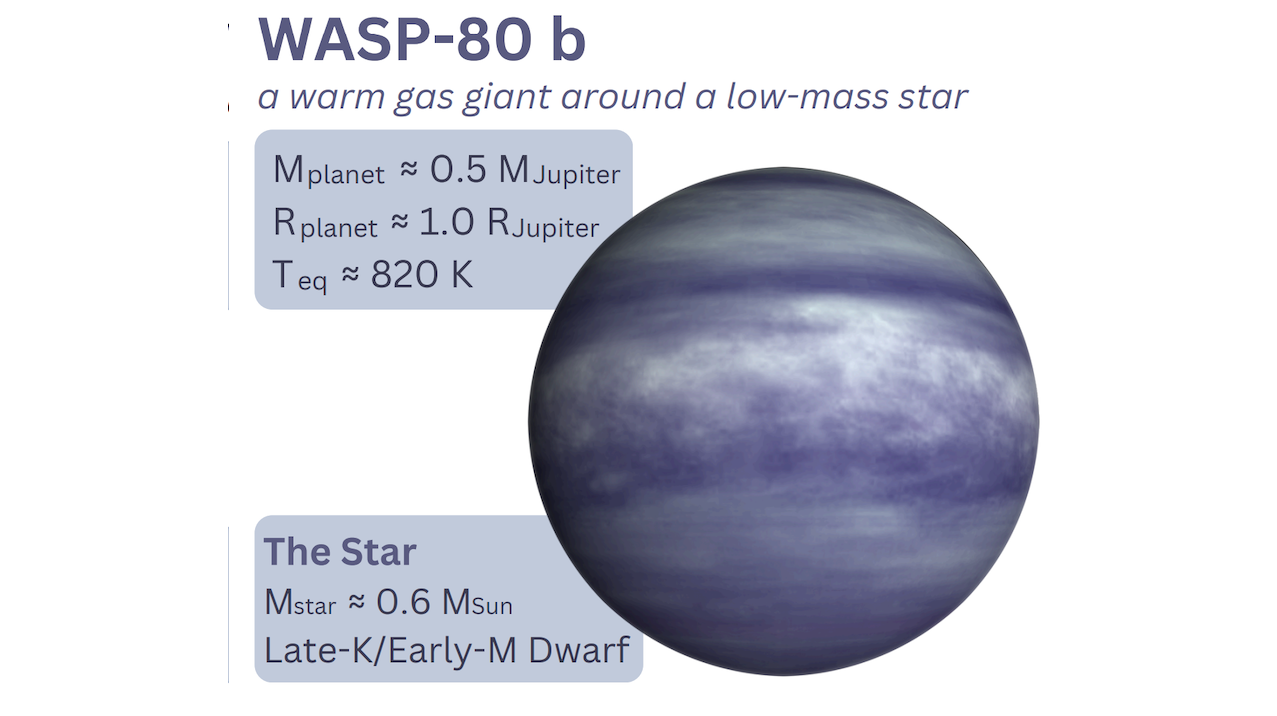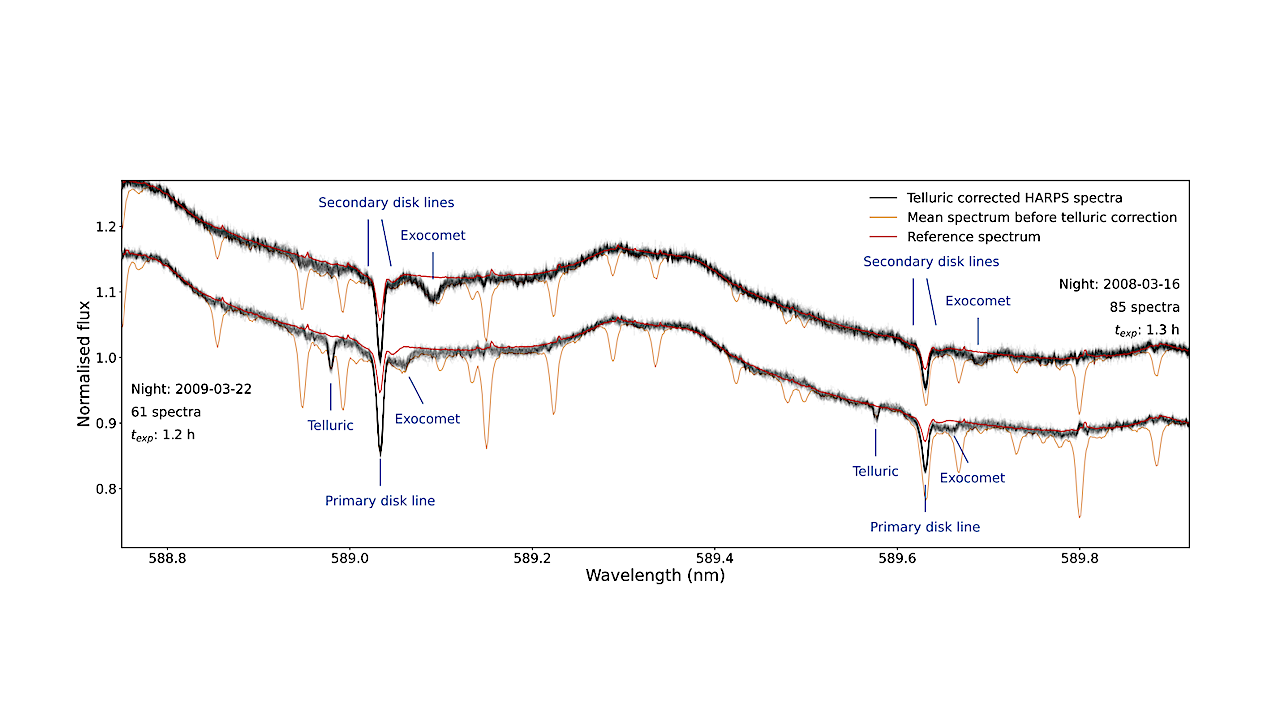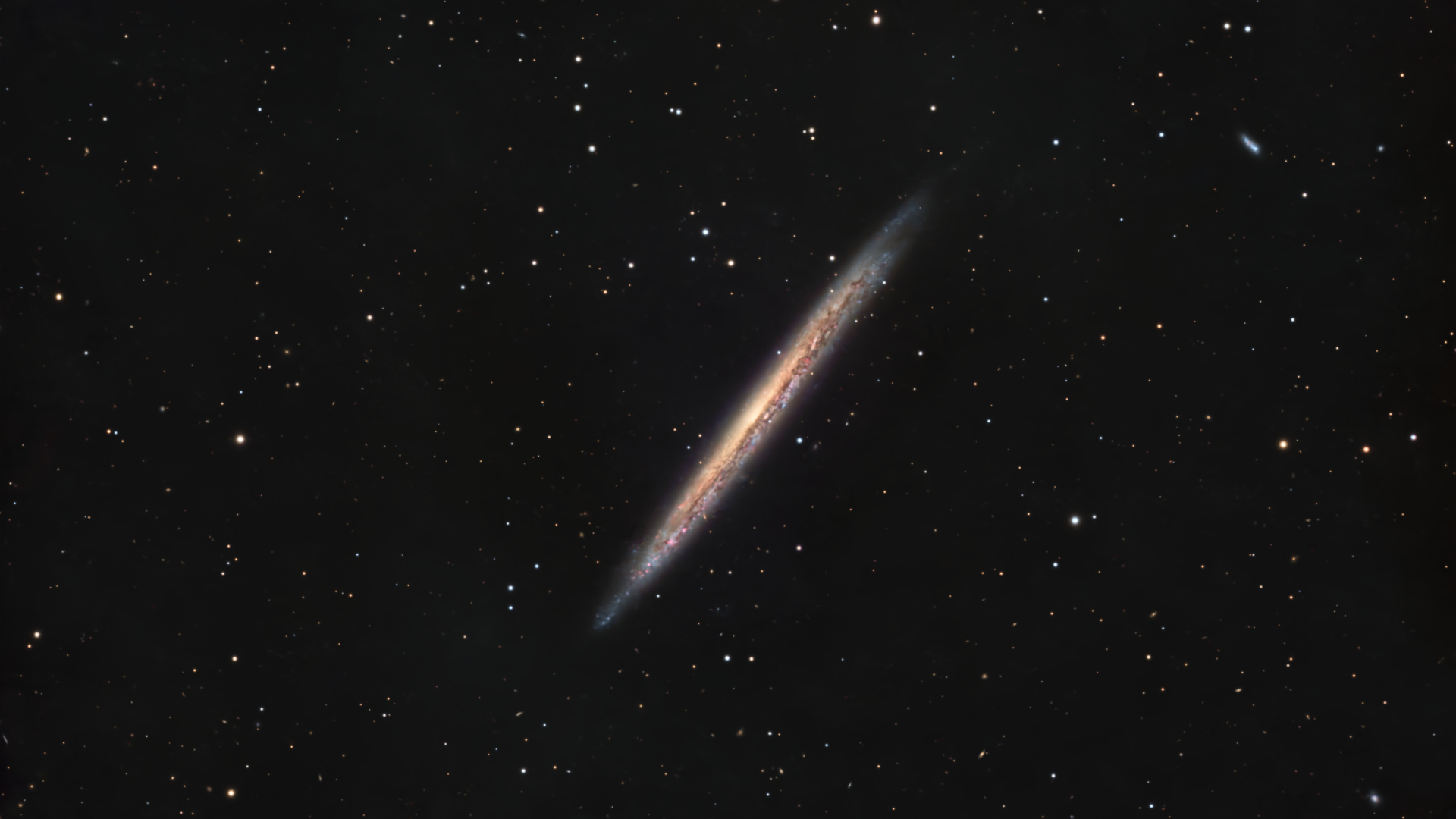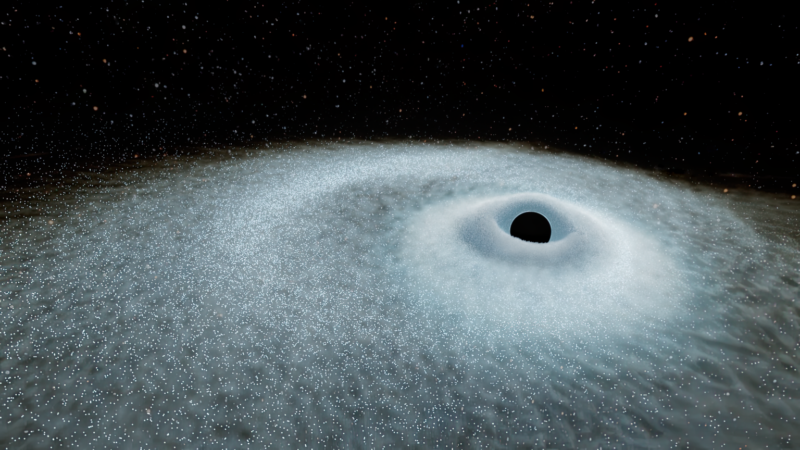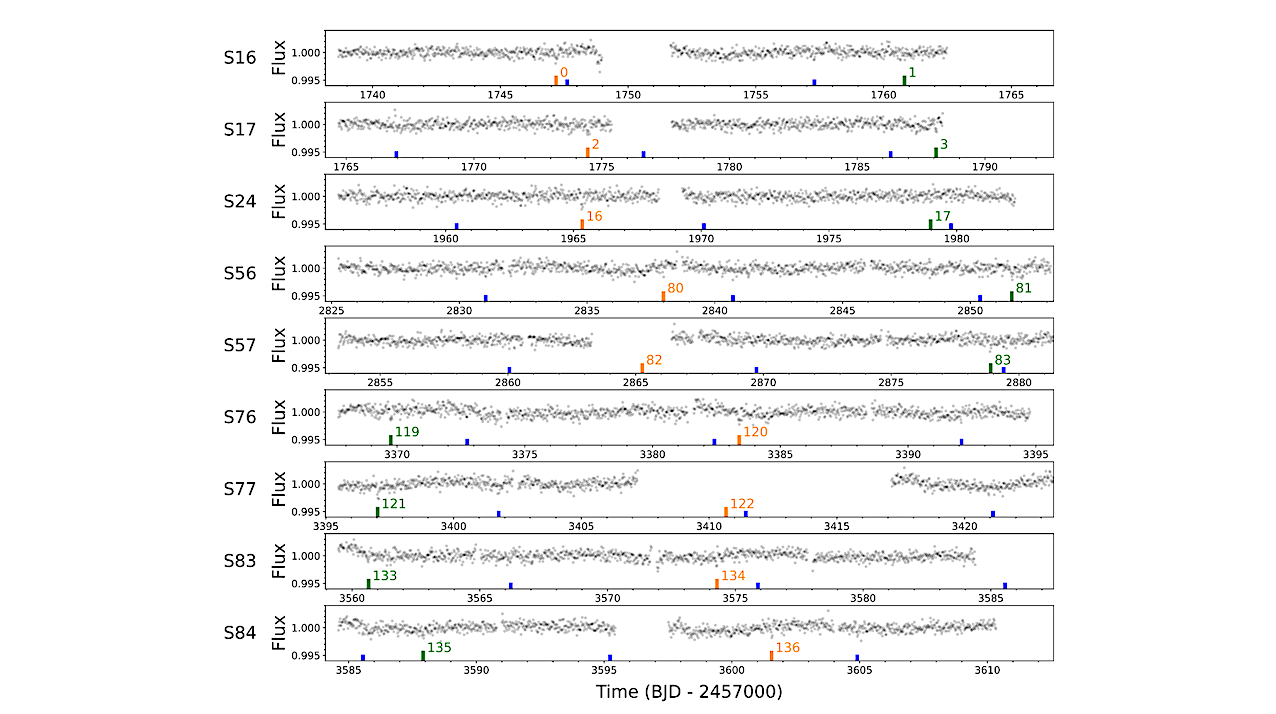Sketch illustrating the dynamical evolution of the solar system planets during and after disk dissipation. The two-sided arrows represent the existence of mean motion resonances. Blue and brown scatters represent
Archive for June, 202595- Page
A summary schematic of assumptions that are made in planet formation modeling, protoplanetary disk modeling, and exoplanet atmospheric modeling. We note that several of the presented variables can be directly
a–c, Spatial distribution of the biogeographical sectors in bioregions of mammals (a), amphibians (b) and reptiles (c). Icons indicate the taxonomic group to which bioregions correspond.The biogeographical interpretations of the
An artist’s rendering of the warm exoplanet WASP-80 b and an overview of its planet-system parameters. Planet image credit: NASA/Ames Research Center. astro-ph.EP WASP-80 b, a warm sub-Jovian (equilibrium temperature
Telluric-corrected HARPS observations at the sodium doublet, obtained on two nights nearly one year apart, vertically offset for clarity. In both nights, significant disk line absorption is visible, as well
The edge-on profile of the Knife Edge spiral galaxy captured by Ronald Brecher in May 2025. (Image credit: Ronald Brecher) Astrophotographer Ronald Brecher captured a striking image of the Knife
In a significant yet somber chapter in the ongoing saga of lunar exploration, the HAKUTO-R Mission 2, aptly named Resilience, encountered an unfortunate fate during its landing attempt on the
Astronomers have discovered a new type of cosmic explosion they’re calling extreme nuclear transients. They occur when a supermassive black hole eats a star some 10 times the sun’s mass.
Expedition 71 Flight Engineer and NASA astronaut Jeanette Epps poses for a portrait inside the seven-window cupola, the International Space Station’s “window to the world,” while orbiting 259 miles above
The sector-to-sector undetrended PDCSAP light curves of TOI-2285 binned by 30 minutes. The sector number is indicated on the left. The locations of even- and odd-number transits of TOI-2285 b
-
 01From Polymerization-Enabled Folding and Assembly to Chemical Evolution: Key Processes for Emergence of Functional Polymers in the Origin of Life
01From Polymerization-Enabled Folding and Assembly to Chemical Evolution: Key Processes for Emergence of Functional Polymers in the Origin of Life -
 02Two Black Holes Observed Circling Each Other for the First Time
02Two Black Holes Observed Circling Each Other for the First Time -
 03How New NASA, India Earth Satellite NISAR Will See Earth
03How New NASA, India Earth Satellite NISAR Will See Earth -
 04Thermodynamic Constraints On The Citric Acid Cycle And Related Reactions In Ocean World Interiors
04Thermodynamic Constraints On The Citric Acid Cycle And Related Reactions In Ocean World Interiors -
 05Φsat-2 begins science phase for AI Earth images
05Φsat-2 begins science phase for AI Earth images -
 06Hurricane forecasters are losing 3 key satellites ahead of peak storm season − a meteorologist explains why it matters
06Hurricane forecasters are losing 3 key satellites ahead of peak storm season − a meteorologist explains why it matters -
 07Binary star systems are complex astronomical objects − a new AI approach could pin down their properties quickly
07Binary star systems are complex astronomical objects − a new AI approach could pin down their properties quickly


